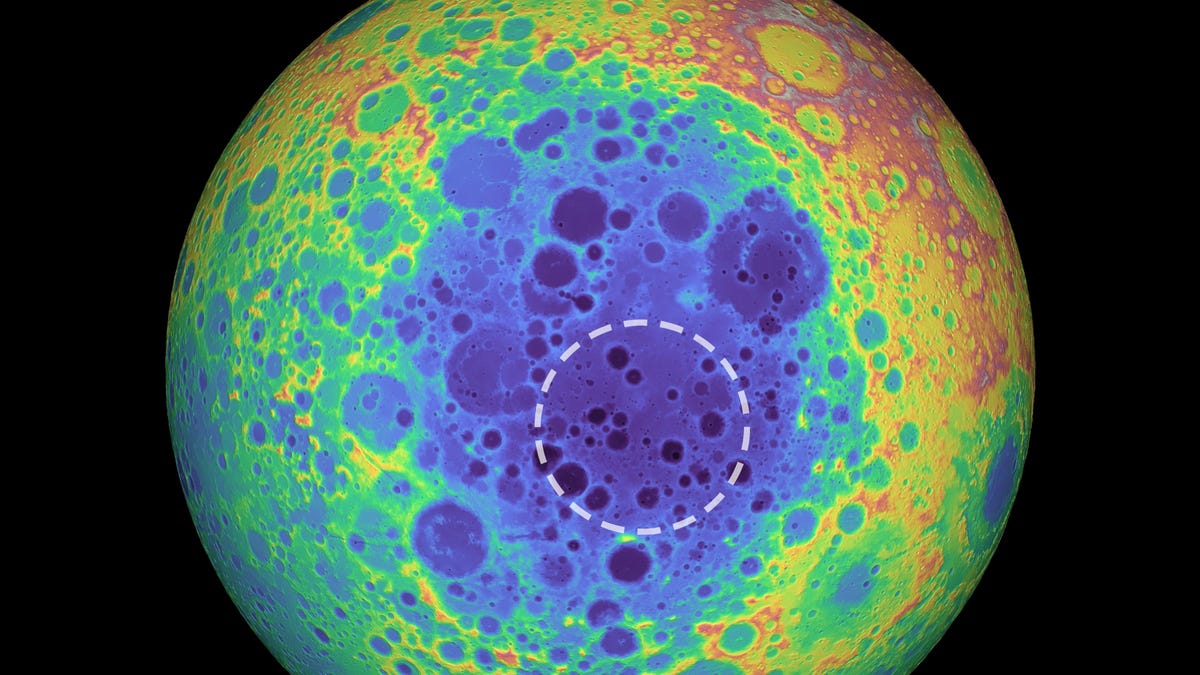Mysterious mass of moon metal discovered under lunar south pole
NASA wants to send astronauts in 5 years to check out the area. They may want to bring metal detectors.

The South Pole-Aitken basin is shown by the shades of blue in this false-color image. The dashed circle shows the location of the mass under the basin.
Scientists say there's something unusual and metallic buried beneath the moon's south pole. No, it isn't a lost lunar Atlantis built by ancient aliens, but more likely the remnant of a colossal collision that formed the largest crater in the solar system.
"Imagine taking a pile of metal five times larger than the Big Island of Hawaii and burying it underground. That's roughly how much unexpected mass we detected," said Peter B. James, assistant professor of planetary geophysics at Baylor University, in a release.
A team of researchers led by James analyzed gravity data for the moon from NASA's Gravity Recovery and Interior Laboratory (GRAIL) mission and cross-referenced it with lunar topography from the Lunar Reconnaissance Orbiter to find the surprising mass hundreds of miles beneath the moon's South Pole-Aitken basin.
The basin near the bottom of our sole natural satellite is an oval-shaped crater several miles deep and up to 1,242 miles (2,000 kilometers) wide. If you're wondering why you may not have seen it before, that's because it's on the moon's far side.
"One of the explanations of this extra mass is that the metal from the asteroid that formed this crater is still embedded in the Moon's mantle," James says, adding that the crater is believed to be 4 billion years old -- almost as old as Earth itself.
Another possible explanation is that the mass might be a product of the moon's ancient ocean of magma solidifying.
The research was published earlier this year in Geophysical Research Letters.
We may not have to wait too long to unlock some of the mysteries of the lunar rear end, as NASA hopes to send astronauts there by 2024.
"We know the South Pole region contains ice and may be rich in other resources, based on our observations from orbit," NASA's Steven Clarke said in April.
Could there be enough resources for the south pole to be transformed into a steel city in space? Probably not anytime soon, but sci-fi fans can dream.

